Taiwan's export boom comes off the boil
Taiwanese export data show the growth rate cooling in the second quarter, corroborating recent PMI survey findings of slower export gains as the global economy cooled amid further COVID-19 waves. Strong pent-up demand for electronics goods in particular bodes well for Taiwan's export growth to pick up again, but this assumes recent supply chain disruptions will ease.
Official data showed Tawian's export orders rising some 31.1% above levels of a year ago in June, marking the sixteenth month of continuous year-on-year expansion. Although down from a peak of 49.3% in January, the annual rate of increase remains higher than anything seen since 2010.
Given that the global economy was struggling in the first waves of the COVID-19 pandemic this time last year, it's perhaps not surprising that year-on-year growth has been strong in recent months. To get a more accurate picture of the current growth trend, it makes sense to look at month-on-month changes or, more preferably, three-month-on-three month changes, as the latter are usually less volatile and help identify turning points more easily.
However, such comparisons are not straightforward as the published Taiwanese export orders series is not adjusted for seasonality. Hence, we've run the raw data through the X12-ARIMA program, which is widely used by statistical offices to remove seasonality, to produce a seasonally adjusted series. As can be seen, this is far less lumpy than the unadjusted raw data.
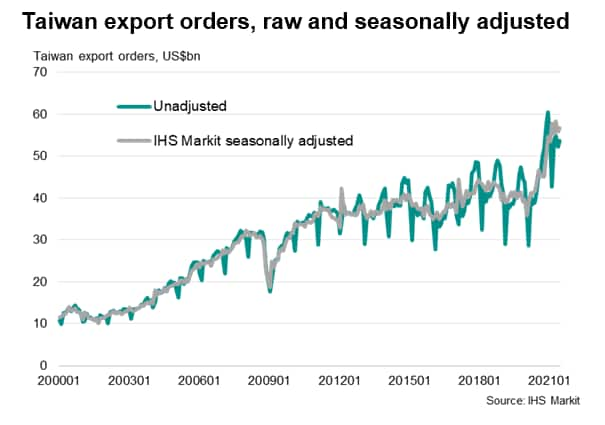
The seasonal adjustment process results in a new series which suggests export orders peaked in April 2021 at US$58.4bn, and have since eased to $56.8bn, the lowest since March - though clearly still very elevated by historical standards.
The change in the latest three months compared to the prior three months is now running at 2.74% for the second quarter, that's down from 10.8% in the first quarter. This tallies with the message from the IHS Markit PMI survey, which showed export orders growth slowing in June to the weakest since November.
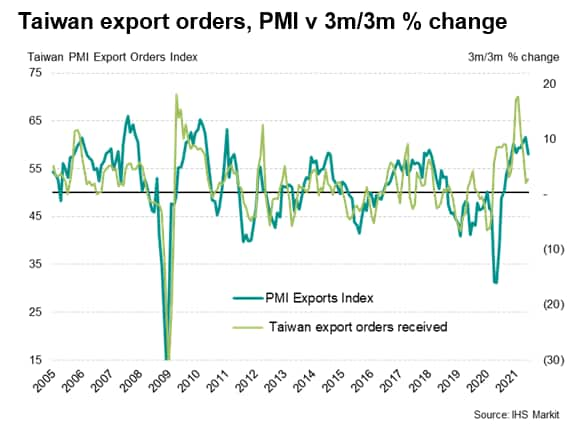
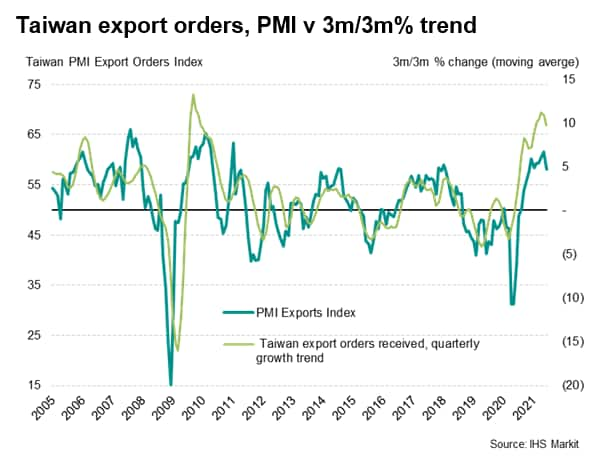
This slowing of growth in the Taiwanese PMI series corresponded with a cooling of global manufacturing output growth in June, which moderated to the slowest since February.
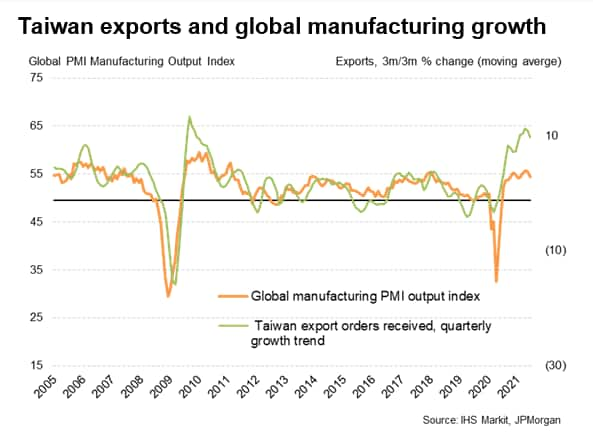
However, the good news is that the global economy continues to expand at a rate which is historically consistent with solid growth of demand for Taiwan's exports, with electronics goods and components seeing especially marked demand growth.
IHS Markit global electronics PMI in fact shows demand for electronic goods continuing to outstrip production, to a large extent due to input shortages curbing production capacity. Taiwan's electronics firms therefore look set to benefit from this developing backlog of work, assuming supply conditions can improve in coming months.
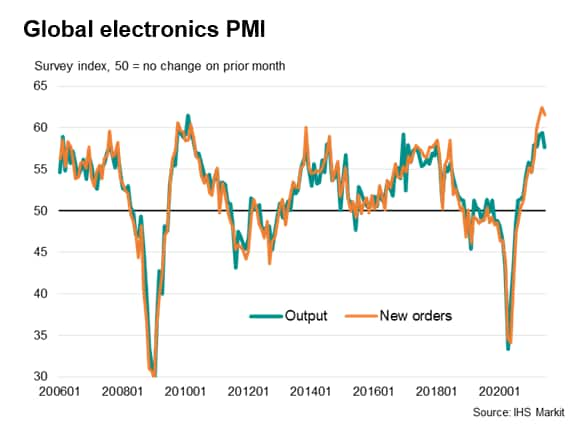
Such a supply improvement is by no means assured though, as the Delta variant continues to disrupt global supply lines, especially in Asia.
July's PMI surveys will provide updated insights into how Taiwan is faring amid the new virus waves, with data published 2nd August.
Contact PMI@ihsmarkit.com for further information.
Chris Williamson, Chief Business Economist, IHS Markit
Tel: +44 207 260 2329
chris.williamson@ihsmarkit.com
© 2021, IHS Markit Inc. All rights reserved. Reproduction in whole
or in part without permission is prohibited.
Purchasing Managers' Index™ (PMI™) data are compiled by IHS Markit for more than 40 economies worldwide. The monthly data are derived from surveys of senior executives at private sector companies, and are available only via subscription. The PMI dataset features a headline number, which indicates the overall health of an economy, and sub-indices, which provide insights into other key economic drivers such as GDP, inflation, exports, capacity utilization, employment and inventories. The PMI data are used by financial and corporate professionals to better understand where economies and markets are headed, and to uncover opportunities.
This article was published by S&P Global Market Intelligence and not by S&P Global Ratings, which is a separately managed division of S&P Global.
